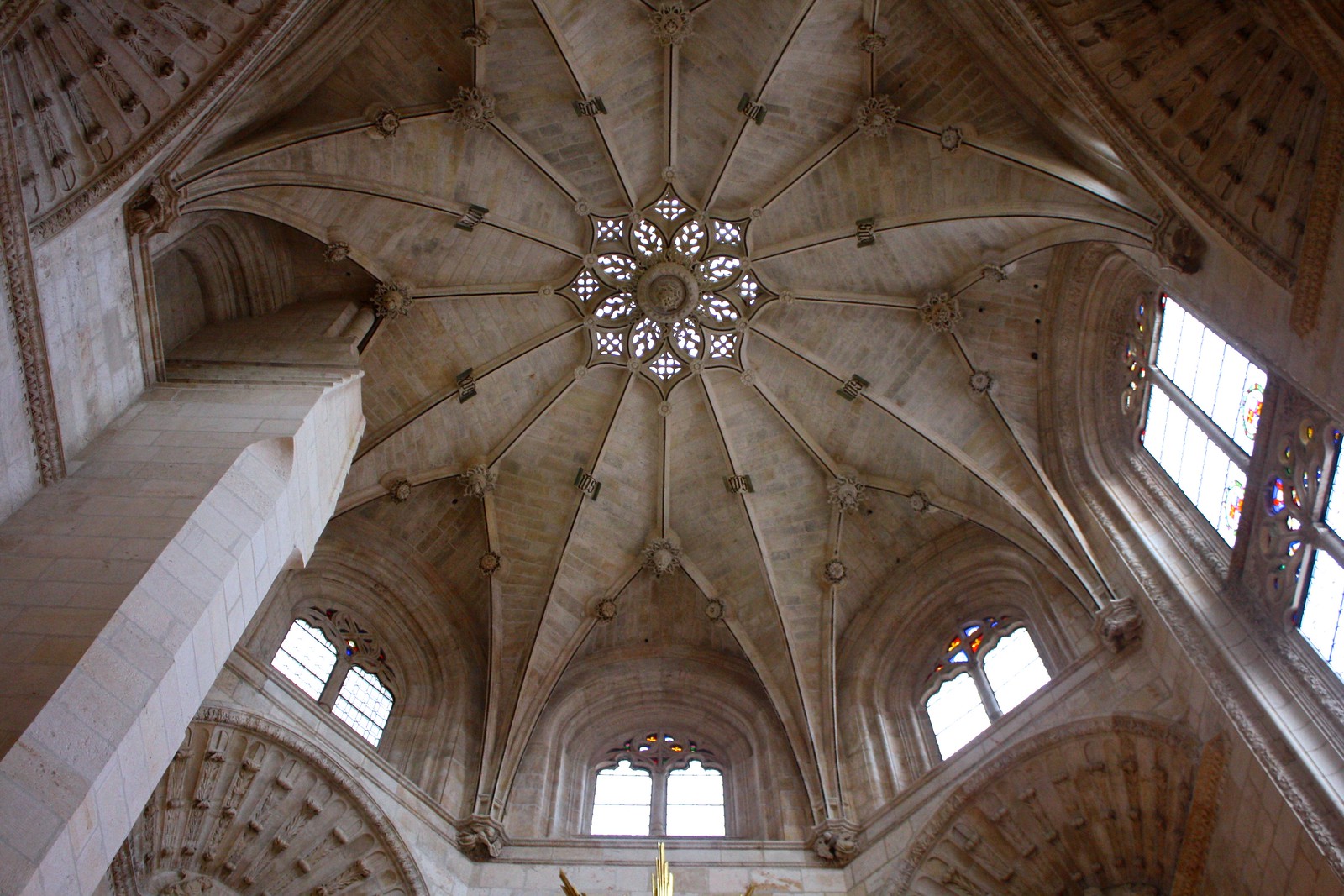Photo Post: The Gothic Cathedral of Burgos, Spain
 |
| The cimborrio in the transept |
Sitting at the top of my travel hitlist for this school year was the north-central Spanish city of Burgos, one of the major stops along the Camino de Santiago’s popular French Route. Although it’s five hours away from Santiago by car and close to approximately zero major airports, I was still determined to swing by this provincial capital, if only to check out its World Heritage-listed Gothic cathedral.
Back in early December an opportunity to visit Burgos finally presented itself to me: I would take the day train out here before transferring to a bus on my way to Logroño to visit my friend Mike. I’ll be talking more on the region of La Rioja in the days to come, but safe to say I was delighted to explore what is now one of my top ten favorite cathedrals in Spain.
 |
| West façade |
Tourism boards love to brag that Burgos’s cathedral is the only one in all of Spain to be declared a World Heritage Site on its own, unlike many others (e.g., Santiago, Córdoba, Salamanca) that form part of a larger protected old town). I’m not sure if this means the cathedral is simply outstanding, or that the rest of Burgos’s old town wasn’t worth declaring as a World Heritage Site…but I digress.
The cathedral was built between 1221 and 1260 in what was then called simply the “French Style.” Inspired by designs from the other side of the Pyrenees Mountains, French Gothic architecture slowly made its way across the Camino de Santiago and influenced both the cathedral here in Burgos and further west in León, whose cathedral wows visitors with wall-to-wall stained glass.
 |
| Presentación Chapel |
This church is a riot of spiky spires and towers, pointy arches, four-leaf clovers, and flowery vaulted ceilings. Apart from lamenting a set of three bland Neoclassical portals that tragically replaced the original Gothic entrances on the west façade, I really enjoyed strolling around the cathedral, in awe of the expertly-restored interior that gleamed in clean white stone. Several walk-in side chapels budded off from the sides, and the pleasant, Hogwarts-style cloister had not one but two floors. The Papamoscas was a lot of fun: a giant cuckoo-clock-style puppet who pops out of the wall to ring a bell and announce the time!
 |
| Condestable Chapel |
But you can find pointy arches, dusty gold Baroque altarpieces, and weeping virgins at any old cathedral. What made the one in Burgos really stand out in my memory was its stunning collection of domes. The octagonal roof in the Presentación Chapel felt like a crown fit for an elven queen, as silvery light poured in from the flower-shaped windows in the ceiling. The Condestable Chapel’s eight-pointed star opened up to let undulating blue light into the sanctuary via dizzying, trippy windows.
And the star (ahem) of the show was the cimborrio over the high altar, a huge “lantern” with two stories of slender windows. The cimborrio was topped with an intricate screen of windows supported by a Mudéjar-style starry vaults; it felt like I was looking directly into heaven above.
 |
| In the transept |
What was your favorite photo from this post? What is your favorite Gothic cathedral? Tell me below in the comments section!
